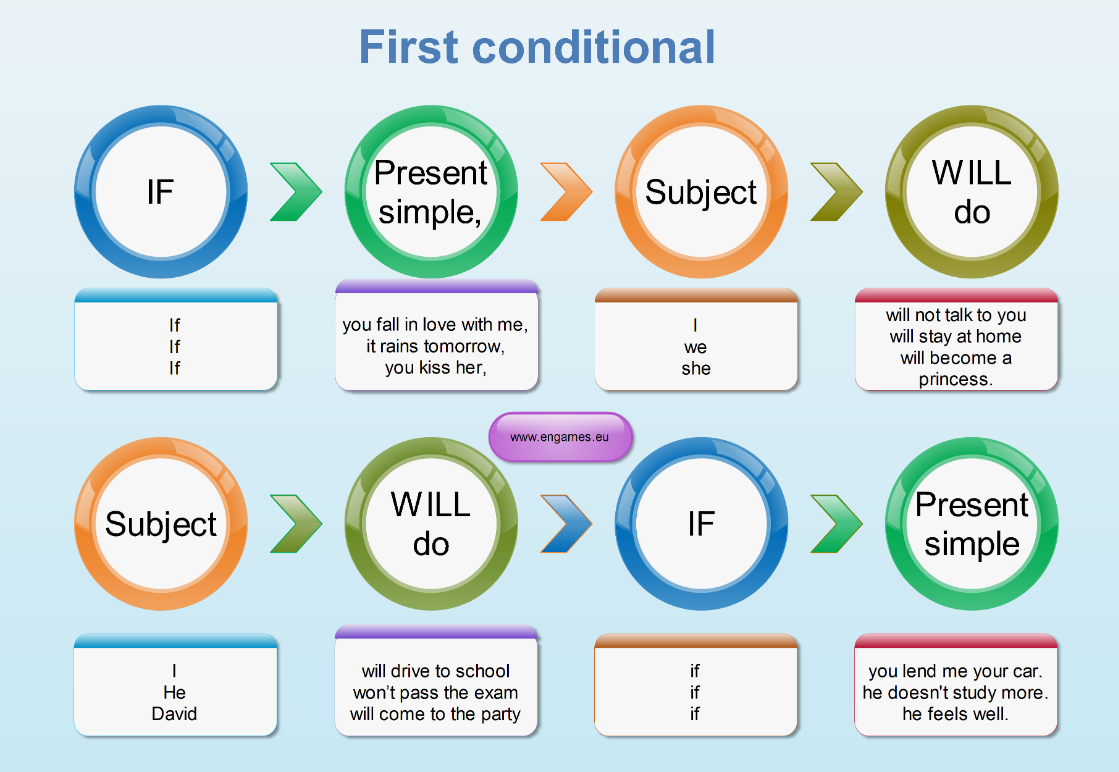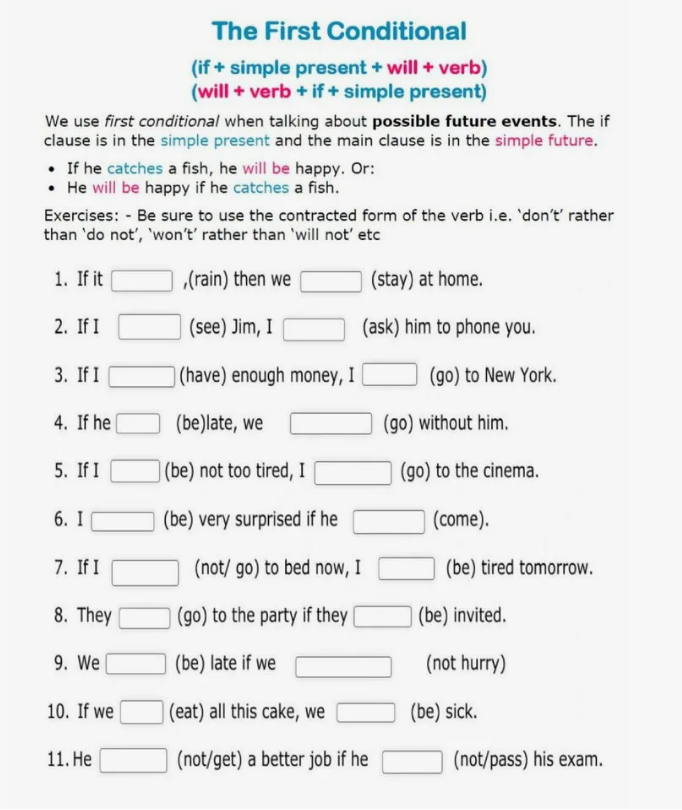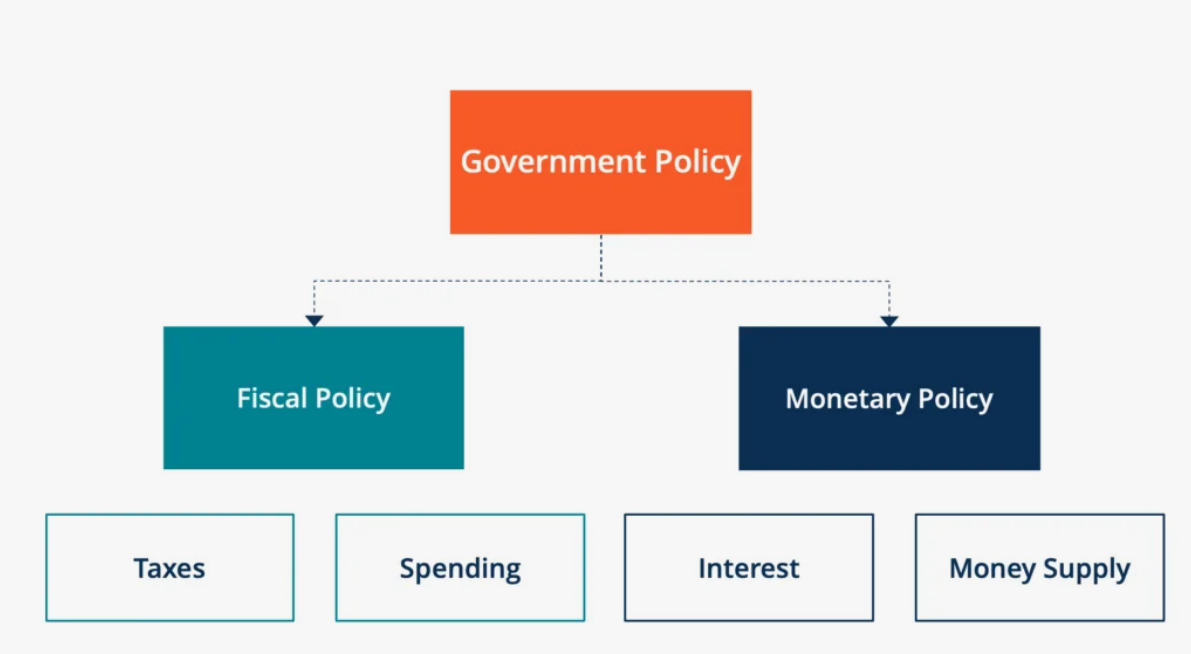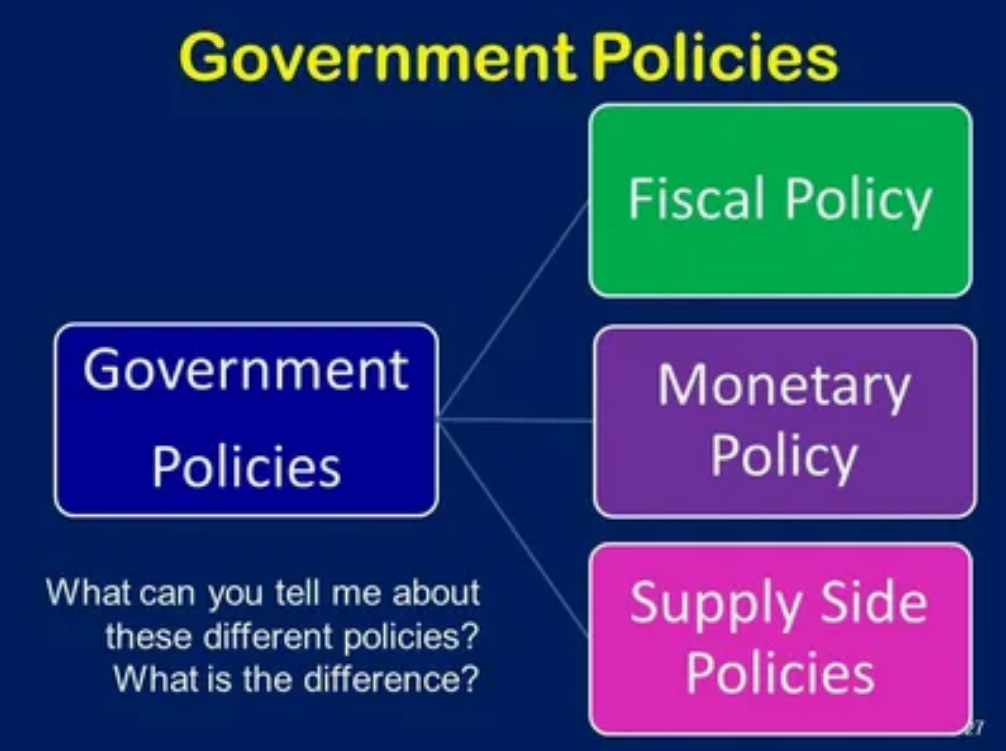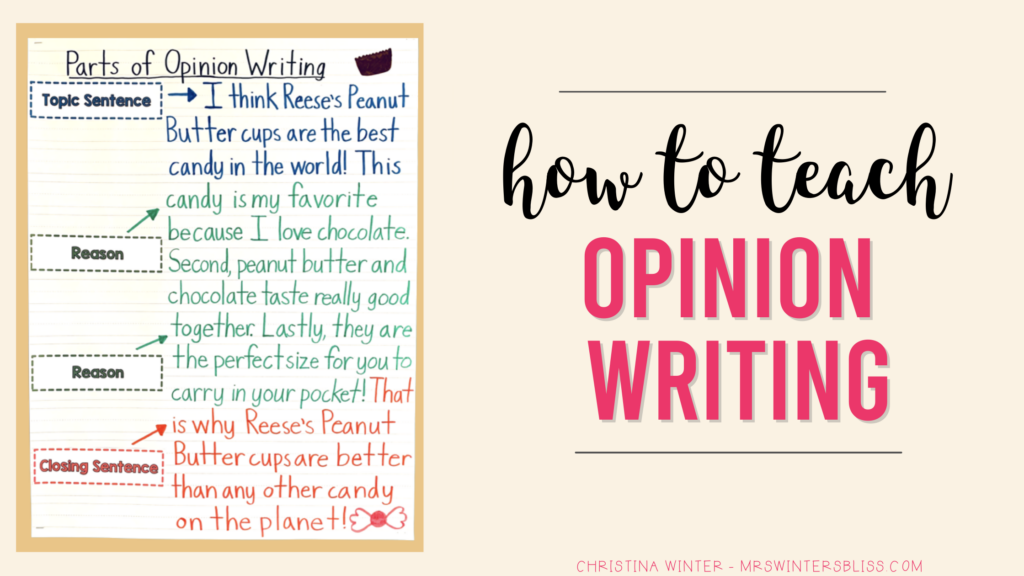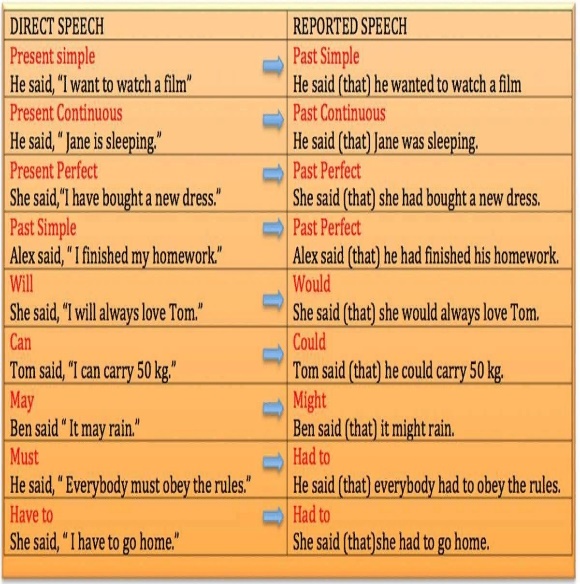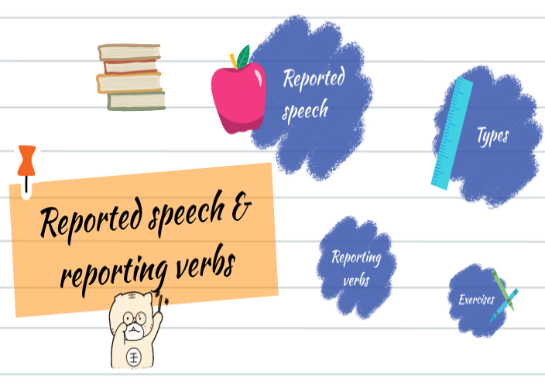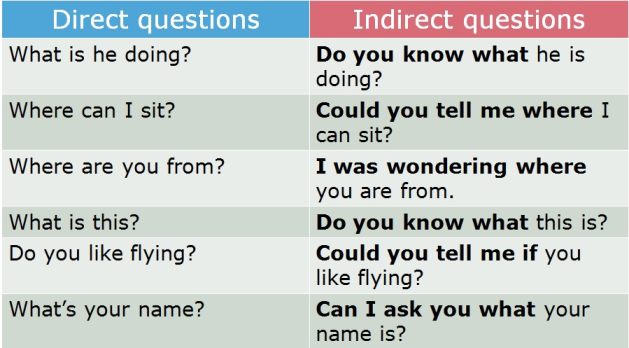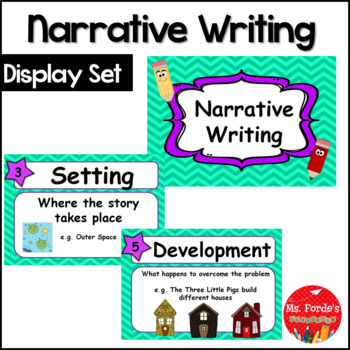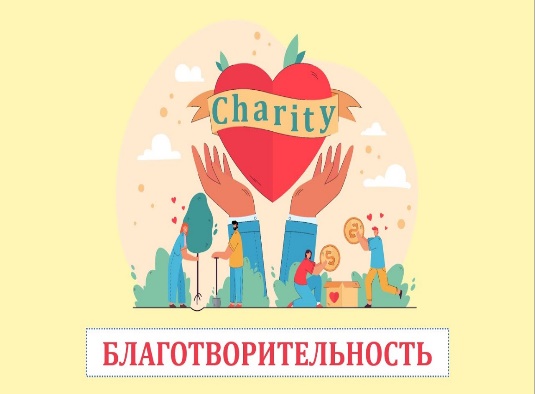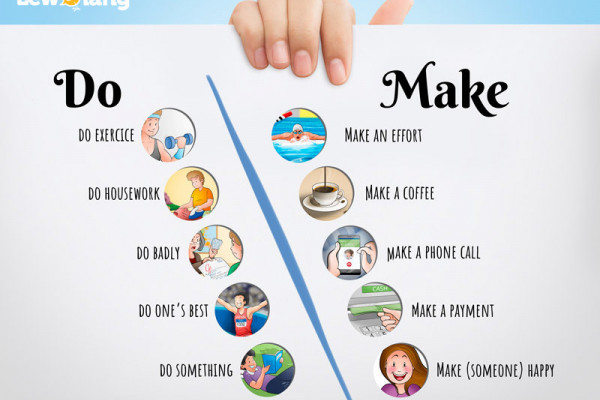
Назар аударыңыз. Бұл материалды сайт қолданушысы жариялаған. Егер материал сіздің авторлық құқығыңызды бұзса, осында жазыңыз. Біз ең жылдам уақытта материалды сайттан өшіреміз
Жақын арада сайт әкімшілігі сізбен хабарласады
қысқа мерзімді сабақ жоспарларын

ҚМЖ English PLus 9 grade 2-term
Сатылымнан түскен қаражат авторға автоматты түрде аударылады. Толығырақ
беріледі

Дипломдар мен сертификаттарды алып үлгеріңіз!


Материалдың толық нұсқасын
жүктеп алып көруге болады
Short term plan Term 2
|
Unit 3 Our planet |
Lesson25 |
||
|
Teacher name: |
|
||
|
Date: |
|
||
|
Grade: 9 |
Number present: |
absent: |
|
|
Lesson title |
Geography and the environment |
||
|
Learning objectives |
9.2.2.1 understand most specific information in unsupported extended talk on a wide range of general and curricular topics 9.3.5.1 interact with peers to negotiate, agree and organise priorities and plans for completing classroom tasks 9.5.2.1 write independently about factual and imaginary past events, activities and experiences on a range of familiar general and curricular topics |
||
|
Lesson objectives |
Learners will be able to: • Learn nouns related to the environment. • Do a quiz on Kazakhstan. • Learn to talk about future trends. |
||
|
Value links |
Family – Family values are moral and ethical principles of typical family life, including sacrificing for loved ones, putting your loved ones first, and keeping your loved ones at the centre of your thoughts and actions. |
||
|
Plan |
|||
|
Stages / Time |
Teachers’ actions |
Students’ actions |
Assessment criteria |
Resources |
|
Beginning of the lesson Warming-up 3 min
|
1.Greeting. Ask about the weather. Warm-up • With books closed, write the environment on the board and elicit or explain the meaning. • Put students into pairs and give them two minutes to write down as many words connected to the environment as they can in English Lead – In
The Geography and Environmental Science Sustainability Society is perfect for students who are passionate about actively protecting our local environment and are interested in local and global issues surrounding sustainability and the environment. |
The wish flower” method helps to start the lesson with good wishes to each other. The aim: To develop Ss speaking skills and create friendly atmosphere Efficiency: By telling the wishes they show their appreciations . Students express their ideas Students share with their opinions how to keep healthy life. |
At the organization moment T tries to award active Ss. «The praise» method is used to evaluate Ss with phrases like: “Good job! Well done!”
Good job! |
Pictures
PPT |
|
Middle of the lesson Presentation part. 37 min
|
Ex:1 P:32 Students work in pairs to match the definitions with the words. In a weaker class, read the definitions together and discuss any unknown vocabulary, e.g. hemisphere, equator. In a stronger class, encourage students to attempt the matching task first, and discuss any difficulties afterwards Differentiation: «Verbal support» method is used to help Students use new words in the text. Ex: 2 P:32 Students do the Our country quiz individually, then compare answers in pairs. Check answers as a class and find out who got the most right. Differentiation: «Verbal support» method is used to help Students ue new words in the text. Ex: 3 P:32 • Students can work individually or in pairs to complete the sentences with the correct words Ask some students to report back on their discussions, and hold a class discussion about any of the ideas where there are interesting differences of opinion |
Students match definitions 1–9 with the words in blue in the Our country quiz. ANSWERS: 1 steppe 6 renewable 2 population 7 equator 3 natural resources 8 canyon 4 agricultural 9 borders 5 latitude 10 hemisphere Students do the Our country quiz. Then check your answers with a partner ANSWERS: 1 four 2 approx. 18 million 3 three from: Republic of the Congo, Democratic Republic of the Congo, Gabon, Kenya, Somalia, Uganda, Indonesia, Brazil, Colombia, Ecuador 4 northern 5 islands 6 80 7 oil 8 apples 9 wind 10 true Students complete the sentences with the words in the box. Discuss the statements with your partner ANSWERS: 1 Natural resources 4 population 2 Renewable 5 steppe, canyons 3 Agricultural 6 hemisphere |
Assessment criteria - Learn nouns related to the environment Descriptor: - match definitions 1–9 with the words in blue in the Our country quiz. Assessment criteria: - Do a quiz on Kazakhstan Descriptor: - complete the sentences with the words in the box. Discuss the statements with your partner -Make CCQ questions Yes / No |
Cards Student’s book Worksheets Student’s book
|
|
End of the lesson 5 min
|
Giving the hometask. Ex: 1 P:22 wb Self-reflection |
Peer-assessment. Two stars and a wish.
Maybe you could ... |
Students use their stickers to show their knowledge according to the lesson. |
Poster Success
|
Short term plan Term 2
|
Unit 3 Our planet
|
Lesson26 |
||
|
Teacher name: |
|
||
|
Date: |
|
||
|
Grade: 9 |
Number present: |
absent: |
|
|
Lesson title |
Our responsibility to planet Earth |
||
|
Learning objectives |
9.3.3.1 explain and justify their own point of view on a range of general and curricular topics 9.4.1.1 understand the main points in extended texts on a range of unfamiliar general and curricular topics 9.4.9.1 recognise inconsistencies in argument in extended texts on a range of general and curricular topics |
||
|
Lesson objectives |
Learners will be able to: • Read about sustainability. • Read for general meaning and specific information. • Learn useful words to walk about sustainability. |
||
|
Value links |
Loyalty – Loyalty might be a core personal value to you if you highly prize friends that are reliable and trustworthy. You might put your friends or chosen family first, always being there for them when they need you. |
||
|
Plan |
|||
|
Stages / Time |
Teachers’ actions |
Students’ actions |
Assessment criteria |
Resources |
|
Beginning of the lesson Warming-up 3 min
|
1.Greeting. Ask about the weather. Warm-up • With books closed, write the word sustainability on the board and ask students what they think it means. Elicit of explain that it means not doing anything that endangers the environment for future generations. • Ask students to think of what sort of developments could cause problems for people in the future Lead – In
The younger generations inherit the world as we have the responsibility to take care of this planet. |
The wish flower” method helps to start the lesson with good wishes to each other. The aim: To develop Ss speaking skills and create friendly atmosphere Efficiency: By telling the wishes they show their appreciations . Students express their ideas Students share with their opinions how to keep healthy life.
|
At the organization moment T tries to award active Ss. «The praise» method is used to evaluate Ss with phrases like: “Good job! Well done!”
Good job! |
Pictures
PPT
|
|
Middle of the lesson Presentation part. 37 min
|
Ex:1 P:34 Ask students what they know about sustainability in Kazakhstan or elsewhere. Are there any projects they know of that have been designed to reduce or limit environmental problems? Differentiation: «Verbal support» method is used to help Students use new words in the text. Ex: 2 P:34 Draw attention to the photos with the text and elicit a description. In a weaker class, encourage students participate by accepting factual descriptions. In a stronger class, ask students to speculate about where the pictures were taken and what the connection to the text is. Differentiation: «Verbal support» method is used to help Students ue new words in the text. Ex: 3 P:34 • In a stronger class, ask students to predict or guess the meaning of the words in blue, without reading the list 1–6. • Students match the words or check their predictions in a stronger class |
Students look at the title and the photo. What do you know about sustainability? ANSWERS: Students read and listen to the text. Write true or false. Correct the false statements ANSWERS: 1 False. The text says ‘If we find the right ecological balance, the planet will survive. 2 True. 3 False. Its goal is 40%. 4 True. 5 False. A third of pollution is caused by cars. 6 True. Students Find the words in blue in the text ANSWERS: 1 beneficial 4 hybrid 2 dominant 5 ecological 3 renewable 6 power plant
|
Assessment criteria - • Read about sustainability. Descriptor: - look at the title and the photo. What do you know about sustainability? Assessment criteria: - Read for general meaning and specific information. Descriptor: - read and listen to the text. Write true or false. Correct the false statements -Make CCQ questions Yes / No |
Cards Student’s book Worksheets Student’s book
|
|
End of the lesson 5 min
|
Giving the hometask. Ex: 1 P:23 wb Self-reflection |
Peer-assessment. Two stars and a wish.
Maybe you could ... |
Students use their stickers to show their knowledge according to the lesson. |
Short term plan Term 2
|
Unit 3 Our planet
|
Lesson27 |
||
|
Teacher name: |
|
||
|
Date: |
|
||
|
Grade: 9 |
Number present: |
absent: |
|
|
Lesson title |
First conditional |
||
|
Learning objectives |
9.3.5.1 interact with peers to negotiate, agree and organise priorities and plans for completing classroom tasks 9.6.10.1 use present continuous forms and past continuous, including a growing variety of passive forms, on a range of familiar general and curricular topics |
||
|
Lesson objectives |
Learners will be able to: • Learn the first conditional. • Practise using the first conditional to talk about possible situations |
||
|
Value links |
Loyalty – Loyalty might be a core personal value to you if you highly prize friends that are reliable and trustworthy. You might put your friends or chosen family first, always being there for them when they need you. |
||
|
Plan |
|||
|
Stages / Time |
Teachers’ actions |
Students’ actions |
Assessment criteria |
Resources |
|
Beginning of the lesson Warming-up 3 min
|
1.Greeting. Ask about the weather. Warm-up • With books closed, ask: What will happen if you look for Sealand on the map? Elicit the answer (You won’t find it). • Write on the board: If you look for Sealand on the map, you won’t find it. Ask students to translate it into their own language. Elicit or teach that it is a first conditional sentence Lead – In
If it rains, I won’t go to the park. |
The wish flower” method helps to start the lesson with good wishes to each other. The aim: To develop Ss speaking skills and create friendly atmosphere Efficiency: By telling the wishes they show their appreciations . Students express their ideas |
At the organization moment T tries to award active Ss. «The praise» method is used to evaluate Ss with phrases like: “Good job! Well done!”
Good job! |
Pictures
PPT
|
|
Middle of the lesson Presentation part. 37 min
|
Ex:1 P:35 In a weaker class, ask students to find the first conditional sentences in the text and complete them with the words in the box. In a stronger class, students should try to complete the sentences before looking back at the text. Differentiation: «Verbal support» method is used to help Students use new words in the text. Ex: 2 P:35 Students complete the sentences with the correct form of the verbs. In a weaker class, allow students to check answers in pairs before checking as a class Differentiation: «Verbal support» method is used to help Students ue new words in the text. Ex: 3 P:35 • Ask students to complete the rules for your family about sustainability. • Focus on the first sentence and elicit ideas. Make sure students are forming the conditional elements correctly. |
Students complete sentences 1–4 from the text with the words in the box. Then choose the correct words in the rules. ANSWERS: 1 stop 2 is, can 3 take, it’ll have 4 improve, if Rules: 1 likely or possible 2 is 3 never 4 can 5 negative Students complete the sentences with the correct form of the verbs in brackets ANSWERS: 1 find, I’ll ring 2 Will, come, buy 3 won’t go, decide 4 won’t buy, it’s 5 wins, she’ll change 6 won’t reply, send Students complete the sentences to make suggestions for your family about sustainability ANSWERS: Students’ own answers. |
Assessment criteria - Learn the first conditional. Descriptor: - choose the correct words and complete sentences Assessment criteria: - Practise using the first conditional to talk about possible situations Descriptor: - complete the sentences with the correct form of the verbs in brackets -Make CCQ questions Yes / No |
Cards Student’s book Worksheets Student’s book
|
|
End of the lesson 5 min
|
Giving the hometask. Ex: 3 P:23 wb Self-reflection |
Peer-assessment. Two stars and a wish.
Maybe you could ... |
Students use their
stickers to show their knowledge according to the
lesson. |
Poster Success |
Short term plan Term 2
|
Unit 3 Our planet |
Lesson28 |
||
|
Teacher name: |
|
||
|
Date: |
|
||
|
Grade: 9 |
Number present: |
absent: |
|
|
Lesson title |
Government policies |
||
|
Learning objectives |
9.2.2.1 understand most specific information in unsupported extended talk on a wide range of general and curricular topics 9.3.7.1 use appropriate subject-specific vocabulary and syntax to talk about a wide increased range of general and curricular topics 9.3.5.1 interact with peers to negotiate, agree and organise priorities and plans for completing classroom tasks |
||
|
Lesson objectives |
Learners will be able to: • Learn verbs for policies. • Listen to a conversation about imagining you were president. • Practise using verbs for policies by imagining you were president of a country |
||
|
Value links |
Fairness – If you value fairness, you might be highly sensitive to situations at school or in the workplace where a teacher or a peer has exhibited favoritism or allowed someone to get away with living by a different set of rules to everyone else. |
||
|
Plan |
|||
|
Stages / Time |
Teachers’ actions |
Students’ actions |
Assessment criteria |
Resources |
|
Beginning of the lesson Warming-up 3 min
|
1.Greeting. Ask about the weather. Warm-up • With books closed, ask: Would you like to be the president of your country? Why? Elicit some ideas. • Ask: What things would you change to help the environment? Why? Elicit some ideas. Don’t worry at this stage if students don’t use the correct verb forms, but just concentrate on encouraging them to think of ideas Lead – In
|
The wish flower” method helps to start the lesson with good wishes to each other. The aim: To develop Ss speaking skills and create friendly atmosphere Efficiency: By telling the wishes they show their appreciations . Students express their ideas
|
At the organization moment T tries to award active Ss. «The praise» method is used to evaluate Ss with phrases like: “Good job! Well done!”
Good job! |
Pictures
PPT |
|
Middle of the lesson Presentation part. 37 min
|
Ex:1 P:35 In a weaker class, ask students to find the first conditional sentences in the text and complete them with the words in the box. In a stronger class, students should try to complete the sentences before looking back at the text. Differentiation: «Verbal support» method is used to help Students use new words in the text. Ex: 2 P:35 • Tell students they are going to listen to two people discussing what policies they would have if they were president. • Ask students to note down which ideas from exercise 1 are mentioned. Differentiation: «Verbal support» method is used to help Students ue new words in the text. Ex: 3 P:35 Allow students time to read the sentences. • In a weaker class, play the CD again and ask students to complete the sentences. Allow students to compare their answers in pairs and discuss any differences before you check with the class |
Students check the meaning of the verbs in the box then read policies ANSWERS: Students’ own answers Students listen to Sophie and Ross talking about what they would do if they were president. Which ideas from exercise 1 do they mention? ANSWERS: tax super-rich sports stars, build better schools, raise the price of petrol Students listen again and complete the sentences ANSWERS: 1 introduce a new tax 4 use cars 2 be happier at school 5 vote for him 3 build better schools and raise the price of petrol |
Assessment criteria - Learn verbs for policies. Descriptor: - check the meaning of the verbs in the box then read policies Assessment criteria: - Listen to a conversation about imagining you were president Descriptor: - listen to Sophie and Ross talking about what they would do if they were president. -Make CCQ questions Yes / No |
Cards Student’s book Worksheets Student’s book
|
|
End of the lesson 5 min
|
Giving the hometask. Ex: 3 P:23 wb Self-reflection |
Peer-assessment. Two stars and a wish.
Maybe you could ... |
Students use their stickers to show their knowledge according to the lesson.
|
Poster Success |
Short term plan Term 2
|
Unit 3 Our planet
|
Lesson29 |
||
|
Teacher name: |
|
||
|
Date: |
|
||
|
Grade: 9 |
Number present: |
absent: |
|
|
Lesson title |
Second conditionals |
||
|
Learning objectives |
9.5.3.1 write with moderate grammatical accuracy on a wide range of familiar general and curricular topics 9.6.17.1 use if only /wish [that] clauses [past reference]; use a variety of relative clauses including prepositions from where, to whom on a range of familiar general and curricular topics |
||
|
Lesson objectives |
Learners will be able to: • Learn the second conditional. • Practise using the second conditional to talk about imaginary situations. • Learn the difference between the first and second conditionals. |
||
|
Value links |
Honesty – You may highly value telling people the truth. This one gets tricky when being honest can be hurtful to others. So, a person who really puts honesty first might be the sort of person who will tell the truth even if it hurts to do so. |
||
|
Plan |
|||
|
Stages / Time |
Teachers’ actions |
Students’ actions |
Assessment criteria |
Resources |
|
Beginning of the lesson Warming-up 3 min
|
1.Greeting. Ask about the weather. Warm-up • With books closed, write on the board: If I was president, … and elicit an ending to the sentence. Write the ending so that you have a complete sentence on the board. • Ask students to translate the sentence into their own language and elicit or teach that it is a second conditional sentence Lead – In
If didn’t rain, I would go to the park. |
The wish flower” method helps to start the lesson with good wishes to each other. The aim: To develop Ss speaking skills and create friendly atmosphere Efficiency: By telling the wishes they show their appreciations . Students express their ideas |
At the organization moment T tries to award active Ss. «The praise» method is used to evaluate Ss with phrases like: “Good job! Well done!”
Good job! |
Pictures
PPT |
|
Middle of the lesson Presentation part. 37 min
|
Ex:1 P:35 Point out that traditionally we use were instead of was in second conditional sentences (If I were president, I would …). Was is also acceptable now, but it is more informal Differentiation: «Verbal support» method is used to help Students use new words in the text. Ex: 2 P:35 In a weaker class, allow students to check answers in pairs before checking as a class Differentiation: «Verbal support» method is used to help Students ue new words in the text. Ex: 3 P:35 Remind students that both the first and the second conditionals refer to the present or future. The only difference is how the speaker sees the situation: is it real / possible (first conditional) or unreal / imaginary (second conditional) |
Students read the rules. Then complete the table with five of the words and phrases in the box. Do we use the second conditional to talk about possible or imaginary situations? ANSWERS: 1 taxed 2 they’d throw 3 would 4 would use 5 raised We use the second conditional to talk about imaginary situations Students choose the correct words ANSWERS: 1 banned, would 2 played, think 3 didn’t, would 4 wouldn’t, stood 5 would, had 6 buy, had Students match examples 1–4 with descriptions a and b. Which conditional is used in each sentence? ANSWERS: a 2, 4 (second conditional) b 1, 3 (first conditional) |
Assessment criteria - Learn the second conditional Descriptor: - read the rules Assessment criteria: - Practise using the second conditional to talk about imaginary situations. Descriptor: - use the second conditional to talk about imaginary situations -Make CCQ questions Yes / No
|
Cards Student’s book Worksheets Student’s book
|
|
End of the lesson 5 min
|
Giving the hometask. Ex: 3 P:23 wb Self-reflection |
Peer-assessment. Two stars and a wish.
Maybe you could ... |
Students use their stickers to show their knowledge according to the lesson.
|
Poster Success
|
Short term plan Term 2
|
Unit 3 Our planet |
Lesson30 |
||
|
Teacher name: |
|
||
|
Date: |
|
||
|
Grade: 9 |
Number present: |
absent: |
|
|
Lesson title |
Apologizing |
||
|
Learning objectives |
9.2.6.1 deduce meaning from context in unsupported extended talk on a wide range of general and curricular topics 9.3.5.1 interact with peers to negotiate, agree and organise priorities and plans for completing classroom tasks 9.6.17.1 use if only /wish [that] clauses [past reference]; use a variety of relative clauses including prepositions from where, to whom on a range of familiar general and curricular topics |
||
|
Lesson objectives |
Learners will be able to: • Listen to a conversation in which people apologize and express regret about a situation. • Learn key phrases for apologizing and expressing regrets. • Learn how to express past and present regrets with I wish. • Practise apologizing |
||
|
Value links |
Honesty – You may highly value telling people the truth. This one gets tricky when being honest can be hurtful to others. So, a person who really puts honesty first might be the sort of person who will tell the truth even if it hurts to do so. |
||
|
Plan |
|||
|
Stages / Time |
Teachers’ actions |
Students’ actions |
Assessment criteria |
Resources |
|
Beginning of the lesson Warming-up 3 min
|
1.Greeting. Ask about the weather. Warm-up With books closed, write I’m sorry on the board and elicit its meaning. Ask students in what kinds of situations they might apologize. Elicit examples and suggestions Lead – In
A good apology starts with the words “I'm sorry,” but doesn’t end there. |
The wish flower” method helps to start the lesson with good wishes to each other.
The aim: To develop Ss speaking skills and create friendly atmosphere Efficiency: By telling the wishes they show their appreciations .
Students express their ideas |
At the organization moment T tries to award active Ss. «The praise» method is used to evaluate Ss with phrases like: “Good job! Well done!”
Good job! |
Pictures
PPT |
|
Middle of the lesson Presentation part. 37 min
|
Ex:1 P:38 Ask: Where is Dean? (in a café) Who is he with? (Marie and another girl, Grace) What’s happening? Look at the options and ask students to interpret Dean’s expression Differentiation: «Verbal support» method is used to help Students use new words in the text.
Ex: 2 P:38 • In a stronger class, ask students to cover the dialogue and just listen. • Ask: Why is Dean apologizing? Differentiation: «Verbal support» method is used to help Students ue new words in the text.
Ex: 3 P:38 Ask students to listen carefully to the intonation, and to try to sound sincere when they say the phrases. Point out that an apology delivered with a flat intonation can sound sarcastic and rude. It is important to convey meaning with the way we speak, as well as with the words |
Students look at the photo. Where are Dean, Marie and Grace? Do you think Dean looks … ANSWERS: They are in a café and Dean looks apologetic (a) Students listen to the dialogue. Why is Dean opologising?
ANSWERS: Dean is apologizing because he told people there was a beach clean-up on Saturday, but there isn’t one
Study the key phrases. which phrases express regret? Practise the dialogue with a partner
ANSWERS: I wish I hadn’t … I’m afraid so / not. I got it wrong. I didn’t realize … I’m really sorry. |
Assessment criteria - Listen to a conversation in which people apologize and express regret about a situation.
Descriptor: - look at the photo. Where are Dean, Marie and Grace? Do you think Dean looks …
Assessment criteria: - Learn key phrases for apologizing and expressing regrets Descriptor: key phrases. which phrases express regret
-Make CCQ questions Yes / No |
Cards
Student’s book
Worksheets
Student’s book
|
|
End of the lesson 5 min
|
Giving the hometask. Ex: 3 P:23 wb Self-reflection |
Peer-assessment. Two stars and a wish.
Maybe you could ... |
Students use their stickers to show their knowledge according to the lesson.
|
Poster Success
|
Short term plan Term 2
|
Unit 3 Our planet |
Lesson31 |
||
|
Teacher name: |
|
||
|
Date: |
|
||
|
Grade: 9 |
Number present: |
absent: |
|
|
Lesson title |
An opinion essay |
||
|
Learning objectives |
9.3.7.1 Use appropriate subject-specific vocabulary and syntax to talk about a wide increased range of general and curricular topics. 9.4.1.1. Understand the main points in extended texts on a range of unfamiliar general and curricular topics. 9.5.2.1. Write independently about factual and imaginary past events,activities and experiences on a range of familiar general and curricular topics.. |
||
|
Lesson objectives |
Learners will be able to: • Study a model opinion essay. • Learn key phrases for writing an opinion essay. • Learn about references and pronouns. • Write an opinion essay. |
||
|
Value links |
Generosity – This may be a core value of yours if you cherish people who will give their time and resources to people in need. You may consider yourself to be a generous person if you find joy and meaning in giving to others. |
||
|
Plan |
|||
|
Stages / Time |
Teachers’ actions |
Students’ actions |
Assessment criteria |
Resources |
|
Beginning of the lesson Warming-up 3 min
|
1.Greeting. Ask about the weather. Warm-up • Focus on the photo. Ask: How old do you think this girl is? What is she doing? Elicit some ideas, and elicit or teach the word straw. • Ask: At what age can you ride a scooter? Elicit the answer, then ask: Should the government stop people using them? Elicit a range of ideas Lead – In
|
The wish flower” method helps to start the lesson with good wishes to each other.
The aim: To develop Ss speaking skills and create friendly atmosphere Efficiency: By telling the wishes they show their appreciations .
Students express their ideas |
At the organization moment T tries to award active Ss. «The praise» method is used to evaluate Ss with phrases like: “Good job! Well done!”
Good job! |
Pictures
PPT |
|
Middle of the lesson Presentation part. 37 min
|
Ex:1 P:38 Students read the model text and answer the questions. Differentiation: «Verbal support» method is used to help Students use new words in the text.
Ex: 2 P:38 • In a weaker class, ask students to find the key phrases in the model text first, and then answer the question. • In a stronger class, encourage students to read through the key phrases and identify their function from memory. Differentiation: «Verbal support» method is used to help Students ue new words in the text.
Ex: 3 P:38 • Focus on the first blue pronoun. Ask students to read that part of the text carefully and decide what this refers to. Refer them to options a–d and ask them to choose the correct answer (b). • Point out that in English nouns like government and police are replaced by the plural pronoun they |
Students read the model text and answer the questions ANSWERS: 1 The writer disagrees with the policy which will mean that companies like Starbucks will not offer free plastic straws with their drinks. 2 Some people with disabilities would be most affected because they need straws in order to drink. 3 Paragraph 2 4 Paragraph 3 5 The writer summarizes his arguments by using ‘In conclusion, … ‘ Students study the key phrases. Which key phrases do not introduce opinions? ANSWERS: In the first place, … In conclusion, …
Study look again at the text. Match the words in blue with a–d ANSWERS: a they c them b this d who |
Assessment criteria - Study a model opinion essay.
Descriptor: - read the model text and answer the questions
Assessment criteria: -Learn key phrases for writing an opinion essay. Descriptor: study the key phrases. -Make CCQ questions Yes / No |
Cards
Student’s book
Worksheets
Student’s book
|
|
End of the lesson 5 min
|
Giving the hometask. Ex: 3 P:23 wb Self-reflection |
Peer-assessment. Two stars and a wish.
Maybe you could ... |
Students use their stickers to show their knowledge according to the lesson.
|
Poster Success
|
Short term plan Term 2
|
Unit 3 Our planet |
Lesson32 |
||
|
Teacher name: |
|
||
|
Date: |
|
||
|
Grade: 9 |
Number present: |
absent: |
|
|
Lesson title |
My country:Our planet. |
||
|
Learning objectives |
9.4.2.1. understand specific information and detail in texts on a range of familiar general and curricular topics. 9.6.12.1use an increased variety of comparative degree adverb structures with regular and irregular adverbs use a variety of pre-verbal and end-position adverbs. |
||
|
Lesson objectives |
Learners will be able to: • Learn about the environment between Lake Balkhash and the Sarysu River. • Identify adverb use in a text. • Learn how adverbs modify adjectives and where adverbs are used in a sentence |
||
|
Value links |
Generosity – This may be a core value of yours if you cherish people who will give their time and resources to people in need. You may consider yourself to be a generous person if you find joy and meaning in giving to others. |
||
|
Plan |
|||
|
Stages / Time |
Teachers’ actions |
Students’ actions |
Assessment criteria |
Resources |
|
Beginning of the lesson Warming-up 3 min
|
1.Greeting. Ask about the weather. Warm-up • Ask students if they have visited the area between Lake Balkhash and the Sarysu River. What did they see and do there? • Ask the whole class what they know about the area and what they think it is like and what wildlife you can see there. Lead – In
It is
situated in lower reaches of Sarysu river on the west, Chu river in
the south, Balkash lake on the east, in the north it borders on
Sary-Arka. The total area is about 75 thousands km, the stretch
from west to east is about 500km, from the north to
170km. |
The wish flower” method helps to start the lesson with good wishes to each other.
The aim: To develop Ss speaking skills and create friendly atmosphere Efficiency: By telling the wishes they show their appreciations .
Students express their ideas highest peak is Dzhambul mountain (H-974). The eastern part of Betpakdala is the continuation of Sary-Aka. The climate is harsh-continental, summer is dry and hot, winter is cold. The average temperature of January is from -12 - 14’C, and + 24 + 26’C in July. |
At the organization moment T tries to award active Ss. «The praise» method is used to evaluate Ss with phrases like: “Good job! Well done!”
Good job! |
Pictures
PPT |
|
Middle of the lesson Presentation part. 37 min
|
Ex:1 P:40 • Draw students’ attention to the photos and ask them what they can see. • Ask which photos show flora and which show fauna Differentiation: «Verbal support» method is used to help Students use new words in the text.
Ex: 2 P:40 • Ask students if they can guess the answers before reading the text. • In a strong class, you might want to play the recording with books closed to see how much information students can hear, before letting them read the text Differentiation: «Verbal support» method is used to help Students ue new words in the text.
Ex: 3 P:40 • Tell students to look at the sentences with the blue words again and complete the rules. • Check answers as a class |
Students look at the photos. What are these animals and plants? In which parts of Kazakhstan can you see them? ANSWERS: wild tulip saiga antelope a steppe lemming a snake Students read and listen to the traveller’s diary. Complete the factfile about BetpakDala.
ANSWERS: Location southern / in the south of Kazakhstan Area 75,000 km2 Highest point 974 metres Climate warm summers and very cold in winter Plants saxaul trees, wild tulips and alhagi Animals camels, argali, steppe lemmings, jerboa, squirrels, wolves and foxes
Study look at the phrases in blue again. Complete the rules with before and after
ANSWERS: 1 before 2 before , after |
Assessment criteria - Learn about the environment between Lake Balkhash and the Sarysu River
Descriptor: - look at the photos. What are these animals and plants?
Assessment criteria: - Identify adverb use in a text. Descriptor: -read and listen to the traveller’s diary. Complete the factfile about Betpak Dala. . -Make CCQ questions Yes / No |
Cards
Student’s book
Worksheets
Student’s book
|
|
End of the lesson 5 min
|
Giving the hometask. Ex: 3 P:23 wb Self-reflection |
Peer-assessment. Two stars and a wish.
Maybe you could ... |
Students use their stickers to show their knowledge according to the lesson.
|
Poster Success
|
Short term plan Term 2
|
Unit 3 Our planet |
Lesson33 |
||
|
Teacher name: |
|
||
|
Date: |
|
||
|
Grade: 9 |
Number present: |
absent: |
|
|
Lesson title |
CLIL. Solving an ecology problem |
||
|
Learning objectives |
9.1.9.1Use imagination to express thoughts,ideas,experiences and feelings. 9.4.2.1. understand specific information and detail in texts on a range of familiar general and cur 9.4.4.1 read a wide range of extended fiction and non-fiction texts on familiar and unfamiliar general and curricular topics ricular topics |
||
|
Lesson objectives |
Learners will be able to: • Read an article about recycling. • Talk about the recycling situation in a town or city. • Decide and present a solution to a rubbish problem |
||
|
Value links |
Integrity – Integrity is the quality of having strong moral principles. So, a person with integrity will always act with honesty and adhere to their own moral code regardless of what others do. |
||
|
Plan |
|||
|
Stages / Time |
Teachers’ actions |
Students’ actions |
Assessment criteria |
Resources |
|
Beginning of the lesson Warming-up 3 min
|
1.Greeting. Ask about the weather. Warm-up • With books closed, ask: Is there anything you would like to change about your school? Elicit some ideas and then ask: What can you do to make your school change? • Ask: Do you think students should have more power to make changes in their school? Elicit some ideas, and encourage students to join in and express their opinions Lead – In
Some of the environmental problems are caused by industry: wastes pollute the waters, gases and fumes poison the air. |
The wish flower” method helps to start the lesson with good wishes to each other.
The aim: To develop Ss speaking skills and create friendly atmosphere Efficiency: By telling the wishes they show their appreciations .
Students express their ideas about ecological problem in their country. |
At the organization moment T tries to award active Ss. «The praise» method is used to evaluate Ss with phrases like: “Good job! Well done!”
Good job! |
Pictures
PPT |
|
Middle of the lesson Presentation part. 37 min
|
Ex:1 P:38 • Refer students to the photo. • Put them into pairs to answer the questions. Differentiation: «Verbal support» method is used to help Students use new words in the text.
Ex: 2 P:38 • Students listen and read the text. • In their pairs, answer the questions Differentiation: «Verbal support» method is used to help Students ue new words in the text.
Ex: 3 P:38 • Allow students to check their answers in pairs and discuss any differences before you check with the class. As usual, in a stronger class, encourage full, complete answers in the students’ own words. |
Students look at the photo. What sort of rubbish do we generate? Sort the items below into the correct categories ANSWERS: Food 5 Paper 3, 6 Glass 1 Plastic 6 Cardboard 4 Metal 2 Tetra Pak 8 PET bottle 9 Cotton, wool 7 Students discuss the questions in pairs
ANSWERS: 1 Rubbish should be separated so that recyclables aren’t sent to landfill. 2 1, 2, 3, 4, 5 3 glass, PET bottles, drink cans 4 Possible answer: Be careful what you buy and don’t waste food
Student Discuss the questions about the situation in your town or city
ANSWERS: Students’ own answers |
Assessment criteria - Read an article about recycling.
Descriptor: - look at the photo. What sort of rubbish do we generate? Sort the items below into the correct categories
Assessment criteria: - Talk about the recycling situation in a town or city. Descriptor: discuss the questions in pairs
-Make CCQ questions Yes / No |
Cards
Student’s book
Worksheets
Student’s book
|
|
End of the lesson 5 min
|
Giving the hometask. Ex: 3 P:23 wb Self-reflection |
Peer-assessment. Two stars and a wish.
Maybe you could ... |
Students use their stickers to show their knowledge according to the lesson. |
Poster Success
|
Short term plan Term 2
|
Unit 3 Our planet |
Lesson34 |
||
|
Teacher name |
|
||
|
Date: |
|
||
|
Grade: 9 |
Number present: |
absent: |
|
|
Lesson title |
Review. |
||
|
Learning objectives |
9.1.9.1. Use imagination to express thoughts, ideas, experiences and feelings. 9.3.7.1 Use appropriate subject-specific vocabulary and syntax to talk about a wide increased range of general and curricular topics. 9.2.8.1 Begin to recognize inconsistencies in argument in extended talk on a growing range of general and curricular subjects |
||
|
Lesson objectives |
Learners will be able to: - Learn useful words to walk about sustainability - Learn the difference between the first and second conditionals. |
||
|
Value links |
Integrity – Integrity is the quality of having strong moral principles. So, a person with integrity will always act with honesty and adhere to their own moral code regardless of what others do. |
||
|
Plan |
|||
|
Stages / Time |
Teachers’ actions |
Students’ actions |
Assessment criteria |
Resources |
|
Beginning of the lesson Warming-up 3 min
|
1.Greeting. Ask about the weather. Warm-up Ask: What things would you change to help the environment? Why? Elicit some ideas. Don’t worry at this stage if students don’t use the correct verb forms, but just concentrate on encouraging them to think of ideas Lead – In
|
The wish flower” method helps to start the lesson with good wishes to each other.
The aim: To develop Ss speaking skills and create friendly atmosphere Efficiency: By telling the wishes they show their appreciations .
Students express their ideas |
At the organization moment T tries to award active Ss. «The praise» method is used to evaluate Ss with phrases like: “Good job! Well done!”
Good job! |
Pictures
PPT |
|
Middle of the lesson Presentation part. 37 min
|
Ex:1 P:42 • Students can work individually or in pairs to complete the sentences with the correct words. • Check answers and then put students into pairs to discuss the ideas Differentiation: «Verbal support» method is used to help Students use new words in the text.
Ex: 2 P:42 • Students complete the sentences with the correct form of the verbs. In a weaker class, allow students to check answers in pairs before checking as a class Differentiation: «Verbal support» method is used to help Students ue new words in the text.
Ex: 3 P:42 • Focus on the next situation and elicit for which person the situation is possible, and for which it is imaginary. • In a weaker class, allow students time to compare their answers in pairs and correct any mistakes |
Students complete the text with the words in the box ANSWERS: 1 border 5 islands 2 population 6 lakes 3 hemisphere 7 resources 4 latitude 8 renewable Students complete phrases 1–8 with the words in the box.
ANSWERS: 1 ban 2 stop 3 promote 4 tax 5 invest 6 develop 7 allow 8 reduce Study order the words and write sentences.
ANSWERS: 1 John’s sister lets him drive her car. 2 My parents won’t let me go out on weekdays. 3 Should they make every citizen vote? 4 The teacher made us stay after school. 5 Does your teacher let you sit next to your friend? 6 Our teacher didn’t make us take a test. |
Assessment criteria - Learn useful words to walk about sustainability Descriptor: - complete the text with the words in the box
Assessment criteria: - - Learn the difference between the first and second conditionals. Descriptor: - order the words and write sentences.
-Make CCQ questions Yes / No |
Cards
Student’s book
Worksheets
Student’s book
|
|
End of the lesson 5 min
|
Giving the hometask. Ex: 1 P:28 wb Self-reflection |
Peer-assessment. Two stars and a wish.
Maybe you could ... |
Students use their stickers to show their knowledge according to the lesson. |
Poster Success
|
Short term plan Term 2
|
Unit 3 Our planet |
Lesson35 |
||
|
Teacher name: |
|
||
|
Date: 01.12.22 |
|
||
|
Grade: 9 |
Number present: |
absent: |
|
|
Lesson title |
Project. A community project |
||
|
Learning objectives |
9.1.1.1 use speaking and listening skills to solve problems creatively and cooperatively in groups 9.4.1.1 understand the main points in extended texts on a range of unfamiliar general and curricular topics 9.5.1.1 plan, write, edit and proofread work at text level with little or no support on a range of general and curricular topics |
||
|
Lesson objectives |
Learners will be able to: • Read a text about a community project. • Identify the main subject of paragraphs. • Create a webpage or a community organization. |
||
|
Value links |
Integrity – Integrity is the quality of having strong moral principles. So, a person with integrity will always act with honesty and adhere to their own moral code regardless of what others do. |
||
|
Plan |
|||
|
Stages / Time |
Teachers’ actions |
Students’ actions |
Assessment criteria |
Resources |
|
Beginning of the lesson Warming-up 3 min
|
1.Greeting. Ask about the weather. Warm-up • Ask students if they know of any community projects near where they live. • Ask them what the projects do and if they know of what they have achieved Lead – In
The IB Community Project is a major activity for students to complete in their 8th Grade year at Hogg Middle School. Hogg is an authorized IB school with a 3 year MYP programme.
|
The wish flower” method helps to start the lesson with good wishes to each other.
The aim: To develop Ss speaking skills and create friendly atmosphere Efficiency: By telling the wishes they show their appreciations .
Students express their ideas |
At the organization moment T tries to award active Ss. «The praise» method is used to evaluate Ss with phrases like: “Good job! Well done!”
Good job! |
Pictures
PPT |
|
Middle of the lesson Presentation part. 37 min
|
Ex:1 P:43 • Draw students’ attention to the pictures. In pairs, students describe one of the pictures to each other. • Together they decide what the charity does. • Ask students to feedback their ideas, but don’t confirm any answers yet Differentiation: «Verbal support» method is used to help Students use new words in the text.
Ex: 2 P:43 • Focus students’ attention to the headings 1–4. Tell them these are the headings on a webpage. • Tell them that the content has got mixed up and they have to identify which of the texts A–D belongs to each heading Differentiation: «Verbal support» method is used to help Students use new words in the text.
Ex: 3 P:43 • Tell students that they are now going to write a webpage. Put students in small groups |
Students read the slogan and look at the pictures. What do you think the charity does? ANSWERS: Student’s own answers Students read the webpage. Match headings 1–4 with sections A–D
ANSWERS: 1 D 2 B 3 C 4 A
Students write a webpage about your own organization. Follow the steps in the project checklist.
ANSWERS: Student’s own answers |
Assessment criteria - Read a text about a community project
Descriptor: - read the slogan and look at the pictures
Assessment criteria: - Identify the main subject of paragraphs. Descriptor: - write a webpage about your own organization
-Make CCQ questions Yes / No |
Cards
Student’s book
Worksheets
Student’s book
|
|
End of the lesson 5 min
|
Giving the hometask. Ex: 3 P:23 wb Self-reflection |
Peer-assessment. Two stars and a wish.
Maybe you could ... |
Students use their stickers to show their knowledge according to the lesson. |
Poster Success |
Short term plan Term 2
|
Unit 4 Charities and conflict |
Lesson36 |
||
|
Teacher name: |
|
||
|
Date: |
|
||
|
Grade: 9 |
Number present: |
absent: |
|
|
Lesson title |
Morals |
||
|
Learning objectives |
9.3.3.1 explain and justify their own point of view on a range of general and curricular topics 9.3.7.1 use appropriate subject-specific vocabulary and syntax to talk about a wide increased range of general and curricular topics 9.6.5.1 use questions including prepositions at what time, in which direction, from whose on a range of familiar general and curricular topics |
||
|
Lesson objectives |
Learners will be able to: Learn verb phrases to do with honesty and morals. • Learn about indirect requests. • Practise forming indirect requests. • Learn how to make requests. |
||
|
Value links |
Perseverance – People who value perseverance will work through adversity and be determined to get a result. This is a great treat for employees and entrepreneurs alike. |
||
|
Plan |
|||
|
Stages / Time |
Teachers’ actions |
Students’ actions |
Assessment criteria |
Resources |
|
Beginning of the lesson Warming-up 3 min
|
1.Greeting. Ask about the weather. Warm-up • With books closed, write Right and Wrong on the board and elicit the meaning. Ask: What things is it wrong to do? Elicit some answers, e.g. stealing, murder, etc. • Put students into pairs and give them two minutes to write down as many things as they can that are wrong. Encourage them to think about small things that we do every day, as well as actual crimes. Lead – In
|
The wish flower” method helps to start the lesson with good wishes to each other.
The aim: To develop Ss speaking skills and create friendly atmosphere Efficiency: By telling the wishes they show their appreciations .
Students express their ideas |
At the organization moment T tries to award active Ss. «The praise» method is used to evaluate Ss with phrases like: “Good job! Well done!”
Good job! |
Pictures
PPT |
|
Middle of the lesson Presentation part. 37 min
|
Ex:1 P:44 Ask students to read the survey to check their answers Differentiation: «Verbal support» method is used to help Students use new words in the text.
Ex: 3 P:44 • Look at the title of the Right or Wrong survey and read the introduction together. • After listening, elicit some opinions about the first situation, and encourage students to agree and disagree with each other. • Ask students to report back on which situations they agreed and disagreed about. Differentiation: «Verbal support» method is used to help Students use new words in the text. Ex: 4 P:44 • Refer students back to number 4 in the questionnaire. Ask: What did Stefan’s mum ask? Elicit the answer and write it on the board (She asked him to tidy his room). • Point out to students that in this context ask refers to a request, not to a question. Ask: What exact words do you think she said? Elicit answers, e.g. Can you tidy your room, please? or Please tidy your room. Write this on the board |
Students complete the phrases with the verbs in the box. ANSWERS: 1 do 2 break 3 feel 4 tell 5 pretend 6 make 7 get 8 make Students read and listen to the Right or Wrong? Survey. Then work in pairs and exchange opinions about the situations. ANSWERS: Student’s own answers
Students complete the sentences. Do we use tell or ask for reporting an order? How do we report negative requests? ANSWERS: 1 not 2 asked 3 to tidy 4 told 5 her We use tell for reporting an order. We report negative requests by adding not before the infinitive |
Assessment criteria - Learn verb phrases to do with honesty and morals. Descriptor: - complete the phrases with the verbs in the box.
Assessment criteria: - Learn about indirect requests. Descriptor: - read and listen to the Right or Wrong? Survey. Then work in pairs and exchange opinions about the situations.
-Make CCQ questions Yes / No |
CD 2.01 Cards
Student’s book
Worksheets
Student’s book
|
|
End of the lesson 5 min
|
Giving the hometask. Ex: 1 P:30 wb Self-reflection |
Peer-assessment. Two stars and a wish.
Maybe you could ... |
Students use their stickers to show their knowledge according to the lesson. |
Poster Success |
Short term plan Term 2
|
Unit 4 Charities and conflict |
Lesson37 |
||
|
Teacher name: |
|
||
|
Date: |
|
||
|
Grade: 9 |
Number present: |
absent: |
|
|
Lesson title |
Charities |
||
|
Learning objectives |
9.3.3.1 explain and justify their own point of view on a range of general and curricular topics 9.3.7.1 use appropriate subject-specific vocabulary and syntax to talk about a wide increased range of general and curricular topics 9.4.2.1 understand specific information and detail in texts on a range of familiar general and curricular topics, including some extended texts |
||
|
Lesson objectives |
Learners will be able to: • Read a text about a charity. • Read for general meaning and specific information. • Express your own opinions on being honest. |
||
|
Value links |
Perseverance – People who value perseverance will work through adversity and be determined to get a result. This is a great treat for employees and entrepreneurs alike. |
||
|
Plan |
|||
|
Stages / Time |
Teachers’ actions |
Students’ actions |
Assessment criteria |
Resources |
|
Beginning of the lesson Warming-up 3 min
|
1.Greeting. Ask about the weather. Warm-up • With books closed elicit what charities do. (Give help usually to people, animals or the environment.) • Ask students what charities they know and what those charities do. • Ask students which charities they think are best. Lead – In
Charities and charitable giving are certainly no exception. |
The wish flower” method helps to start the lesson with good wishes to each other.
The aim: To develop Ss speaking skills and create friendly atmosphere Efficiency: By telling the wishes they show their appreciations .
Students express their ideas |
At the organization moment T tries to award active Ss. «The praise» method is used to evaluate Ss with phrases like: “Good job! Well done!”
Good job! |
Pictures
PPT |
|
Middle of the lesson Presentation part. 37 min
|
Ex:1 P:46 • Read the topics together and give students a moment to discuss the options in pairs. • Tell students to read the text quickly ignoring the gaps, then check answers and discuss what the photos represent. Find out is students’ predictions were correct Differentiation: «Verbal support» method is used to help Students use new words in the text.
Ex: 2 P:46 • Tell students to read the text and complete it with the missing sentences Differentiation: «Verbal support» method is used to help Students use new words in the text.
Ex: 3 P:46 • Students complete the sentences individually and then compare their answers in pairs. Remind students to pay attention to tense |
Students read and listen to the text to check your answer ANSWERS: a, b and d are all mentioned Students read the text again and complete gaps with sentences . Then listen to the text and check your answers ANSWERS: 1 c 2 e 3 a 4 b 5 d
Students complete the sentences with the correct form of make or do ANSWERS: 1 done 2 make 3 made 4 did 5 made 6 do |
Assessment criteria - Read a text about a charity
Descriptor: - read and listen to the text to check your answer
Assessment criteria: - Read for general meaning and specific information. Descriptor: - complete the sentences with the correct form of make or do -Make CCQ questions Yes / No |
Cards
Student’s book
Worksheets
Student’s book
|
|
End of the lesson 5 min
|
Giving the hometask. Ex: 2 P:30 wb Self-reflection |
Peer-assessment. Two stars and a wish.
Maybe you could ... |
Students use their stickers to show their knowledge according to the lesson. |
Poster Success
|
Short term plan Term 2
|
Unit 4 Charities and conflict |
Lesson38 |
||
|
Teacher name: |
|
||
|
Date: |
|
||
|
Grade: 9 |
Number present: |
absent: |
|
|
Lesson title |
Reported speech: tense changes |
||
|
Learning objectives |
9.3.5.1 interact with peers to negotiate, agree and organise priorities and plans for completing classroom tasks 9.5.3.1 write with moderate grammatical accuracy on a wide range of familiar general and curricular topics 9.6.11.1 use an increased variety of reported speech forms for statements, questions and commands: including indirect and embedded questions with know, wonder on a range of familiar general and curricular topics |
||
|
Lesson objectives |
Learners will be able to: • Learn about tense changes in reported speech. • Practise transforming direct speech to reported speech. |
||
|
Value links |
Self-Discipline – If you value self-discipline, you might be a person who wakes up early, exercises daily, and doesn’t get distracted by vices. |
||
|
Plan |
|||
|
Stages / Time |
Teachers’ actions |
Students’ actions |
Assessment criteria |
Resources |
|
Beginning of the lesson Warming-up 3 min
|
1.Greeting. Ask about the weather. Warm-up • With books closed, ask students to think again about the text about a charity. Ask students how some of the injured soldier mentioned in the text felt about the games Lead – In
|
The wish flower” method helps to start the lesson with good wishes to each other.
The aim: To develop Ss speaking skills and create friendly atmosphere Efficiency: By telling the wishes they show their appreciations .
Students express their ideas |
At the organization moment T tries to award active Ss. «The praise» method is used to evaluate Ss with phrases like: “Good job! Well done!”
Good job! |
Pictures
PPT |
|
Middle of the lesson Presentation part. 37 min
|
Ex:1 P:47 • Write on the board: Many soldiers said they couldn’t find the motivation to take part in everyday activities. Refer students to paragraph 1 of the text on page 46 Differentiation: «Verbal support» method is used to help Students use new words in the text.
Ex: 2 P:47 Focus on the example and remind students that pronouns also often change in reported speech. • In a weaker class, get volunteers to stand up and be the characters (Jane, Pete, Pete’s friend and Liz) and the reporter. Have the reporter stand to one side of the group. Elicit how they would describe each other, e.g. Pete says Differentiation: «Verbal support» method is used to help Students use new words in the text.
Ex: 3 P:47 • In a weaker class, ask students to underline the words that will change, and talk them through if necessary. In a stronger class, refer students back to the rules, and encourage them to rewrite the sentences |
Students study sentences. Find these sentences in reported speech in the text. How do the verbs change? Choose the correct words in the rules. ANSWERS: Rules: 1 past simple 2 past perfect 3 past perfect 4 had to Students read the dialogue and complete the summary with the correct pronouns. ANSWERS: 1 his 2 he 3 him 4 her 5 she 6 him 7 they 8 him Students rewrite the sentences using reported speech. ANSWERS: 1 The man said that he didn’t feel guilty. 2 My brother said that I was making a big mistake. 3 Phil’s father said that Phil had to stay at home. 4 John said that he would keep quiet about the crime. 5 The children said that their teacher could be quite strict. 6 The teacher said that some students hadn’t done much revision. 7 His friends said that they had already seen that film. |
Assessment criteria - Learn about tense changes in reported speech.
Descriptor: - Find reported speech in the text.
Assessment criteria: - Practise transforming direct speech to reported speech. Descriptor: - read the dialogue and complete the summary with the correct pronouns.
-Make CCQ questions Yes / No |
Cards
Student’s book
Worksheets
Student’s book
|
|
End of the lesson 5 min
|
Giving the hometask. Ex: 1 P:31 wb Self-reflection |
Peer-assessment. Two stars and a wish.
Maybe you could ... |
Students use their stickers to show their knowledge according to the lesson. |
Poster Success |
Short term plan Term 2
|
Unit 4 Charities and conflict |
Lesson39 |
||
|
Teacher name: |
|
||
|
Date: |
|
||
|
Grade: 9 |
Number present: |
absent: |
|
|
Lesson title |
Reporting verbs |
||
|
Learning objectives |
9.2.1.1 understand the main points in unsupported extended talk on a wide range of general and curricular topics 9.2.8.1 begin to recognize inconsistencies in argument in extended talk on a growing range of general and curricular subjects 9.3.7.1 use appropriate subject-specific vocabulary and syntax to talk about a wide increased range of general and curricular topics |
||
|
Lesson objectives |
Learners will be able to: • Learn reporting verbs. • Read about famous protests • Learn how to learn verb patterns. |
||
|
Value links |
Self-Discipline – If you value self-discipline, you might be a person who wakes up early, exercises daily, and doesn’t get distracted by vices. |
||
|
Plan |
|||
|
Stages / Time |
Teachers’ actions |
Students’ actions |
Assessment criteria |
Resources |
|
Beginning of the lesson Warming-up 3 min
|
1.Greeting. Ask about the weather. Warm-up • Focus on the photo and elicit that it shows a demonstration. Ask students to look carefully and say what the people are protesting against. Elicit a range of ideas Lead – In
They agreed to lend him the money. They claim to be the best in the market. She offered to help. You promised to come with us. He refused to answer any questions |
The wish flower” method helps to start the lesson with good wishes to each other.
The aim: To develop Ss speaking skills and create friendly atmosphere Efficiency: By telling the wishes they show their appreciations .
Students express their ideas |
At the organization moment T tries to award active Ss. «The praise» method is used to evaluate Ss with phrases like: “Good job! Well done!”
Good job! |
Pictures
PPT |
|
Middle of the lesson Presentation part. 37 min
|
Ex:1 P:48 • Tell students to look at the photo again and find the things related to the words in the box. • Ask individual students to hold their books up and point to the items for other students to see Differentiation: «Verbal support» method is used to help Students use new words in the text.
Ex: 2 P:48 • Ask students to read the text through quickly for general meaning. Ask: What was the protest against? And When was it? Differentiation: «Verbal support» method is used to help Students use new words in the text.
Ex: 3 P:4 • In a weaker class, do the first sentence together. Elicit the reporting verb (order) and ask students to find it in the table in exercise 2. Students find the appropriate verb pattern and rewrite the sentence. • In a stronger class, you could ask students to cover up the exercise, and read out the direct speech to them. If necessary, use tone of voice to help convey meaning |
Students look at the photo. Which of the items in the box can you see? ANSWERS: All of the items are in the photo Students check the meaning of the verbs in the box. Then choose the correct words in the text ANSWERS: 1 invited 2 offered 3 refused 4 admit 5 explained 6 convinced 7 agreed 8 complain 9 ordered 10 insisted
Students rewrite sentences 1–6. Then listen and check your answers. ANSWERS: 1 He ordered Sandra to go to her room. 2 He refused to go. 3 She offered to open the window. 4 He invited us all to come to his party. 5 They complained that they didn’t have any money. 6 He insisted that he hadn’t done it |
Assessment criteria - Learn reporting verbs.
Descriptor: - check the meaning of the verbs
Assessment criteria: - Read about famous protests Descriptor: - read the text.
-Make CCQ questions Yes / No |
Cards
Student’s book
Worksheets
Student’s book
|
|
End of the lesson 5 min
|
Giving the hometask. Ex: 1 P:32 wb Self-reflection |
Peer-assessment. Two stars and a wish.
Maybe you could ... |
Students use their stickers to show their knowledge according to the lesson. |
Poster Success
|
Short term plan Term 2
|
Unit 4 Charities and conflict
|
Lesson40 |
||
|
Teacher name: |
|
||
|
Date: |
|
||
|
Grade: 9 |
Number present: |
absent: |
|
|
Lesson title |
Reported and indirect questions |
||
|
Learning objectives |
9.3.5.1 interact with peers to negotiate, agree and organize priorities and plans for completing classroom tasks 9.5.3.1 write with moderate grammatical accuracy on a wide range of familiar general and curricular topics 9.6.11.1 use an increased variety of reported speech forms for statements, questions and commands: including indirect and embedded questions with know, wonder on a range of familiar general and curricular topics |
||
|
Lesson objectives |
Learners will be able to: • Learn about reported and indirect questions. • Practise writing reported questions. • Practise using indirect questions |
||
|
Value links |
Self-Discipline – If you value self-discipline, you might be a person who wakes up early, exercises daily, and doesn’t get distracted by vices. |
||
|
Plan |
|||
|
Stages / Time |
Teachers’ actions |
Students’ actions |
Assessment criteria |
Resources |
|
Beginning of the lesson Warming-up 3 min
|
1.Greeting. Ask about the weather. Warm-up • With books closed, briefly revise reported speech. Elicit some examples of direct speech, and ask different students to change the direct sentences into reported speech. • Elicit the rules for reported speech. If necessary prompt students by asking about tenses, and any other changes (pronouns) Lead – In
|
The wish flower” method helps to start the lesson with good wishes to each other.
The aim: To develop Ss speaking skills and create friendly atmosphere Efficiency: By telling the wishes they show their appreciations .
Students express their ideas |
At the organization moment T tries to award active Ss. «The praise» method is used to evaluate Ss with phrases like: “Good job! Well done!”
Good job! |
Pictures
PPT |
|
Middle of the lesson Presentation part. 37 min
|
Ex:1 P:49 • Put students into pairs to study the tables and decide if sentences 1–4 are true or false Differentiation: «Verbal support» method is used to help Students use new words in the text.
Ex: 2 P:49 • Students choose the correct words in the sentences. Differentiation: «Verbal support» method is used to help Students use new words in the text.
Ex: 3 P:49 • Focus on the example with the class and elicit or point out all the changes that have been made from the direct question to the reported question (tense change, word order, pronouns, use of if). Write the list up on the board. • In a weaker class, talk it through step-by-step, referring to the list on the board, eliciting the changes from the class. • In a stronger class, students rewrite the questions individually, swap sentences and check each feature together |
Students study the direct and reported questions from the text on page 48. Then write true or false for sentences 1–4 ANSWERS: 1 False. 2 False. 3 True. 4 True Students choose the correct words ANSWERS: 1 knew 2 had 3 I thought 4 I came 5 had 6 wanted
Students rewrite the direct questions as reported questions. ANSWERS: 1 Piers asked Maya when she had lost her bag. 2 A man asked us if / whether the bank was near the station. 3 The police officer asked me if / whether I had seen the thief. 4 I asked my friend if / whether I could borrow €2. 5 Sarah asked Chris who the police officer was talking to. 6 The teacher asked the students if / whether they had heard about the robbery |
Assessment criteria -Learn about reported and indirect questions.
Descriptor: - study the direct and reported questions
Assessment criteria: - Practise writing reported questions Descriptor: - rewrite the direct questions as reported questions.
-Make CCQ questions Yes / No |
Cards
Student’s book
Worksheet
Student’s book
|
|
End of the lesson 5 min
|
Giving the hometask. Ex: 1 P:31 wb Self-reflection |
Peer-assessment. Two stars and a wish.
Maybe you could ... |
Students use their stickers to show their knowledge according to the lesson. |
Poster Success
|
Short term plan Term 2
|
Unit 4 Charities and conflict |
Lesson41 |
||
|
Teacher name: |
|
||
|
Date: |
|
||
|
Grade: 9 |
Number present: |
absent: |
|
|
Lesson title |
Explaining and clarifying situations |
||
|
Learning objectives |
9.2.1.1 understand the main points in unsupported extended talk on a wide range of general and curricular topics 9.3.5.1 interact with peers to negotiate, agree and organise priorities and plans for completing classroom tasks 9.3.7.1 use appropriate subject-specific vocabulary and syntax to talk about a wide increased range of general and curricular topics |
||
|
Lesson objectives |
Learners will be able to: • Listen to a conversation in which someone explains and clarifies a situation. • Learn key phrases for explaining and clarifying a situation. • Practise explaining and clarifying a situation. |
||
|
Value links |
Kindness – If you value kindness, you’ll likely always be respectful of people around you, be gentle with criticism, and always willing to welcome people with open arms. |
||
|
Plan |
|||
|
Stages / Time |
Teachers’ actions |
Students’ actions |
Assessment criteria |
Resources |
|
Beginning of the lesson Warming-up 3 min
|
1.Greeting. Ask about the weather. Warm-up • Ask students if they have ever been found out for giving an excuse whey they couldn’t do something, for example said they were going to their grandparents’ house, only for someone to see them at a party. • Ask them why they made the excuse in the first place. Was it because they didn’t want to do something or was it because their plans changed? Lead – In
|
The wish flower” method helps to start the lesson with good wishes to each other.
The aim: To develop Ss speaking skills and create friendly atmosphere Efficiency: By telling the wishes they show their appreciations .
Students express their ideas |
At the organization moment T tries to award active Ss. «The praise» method is used to evaluate Ss with phrases like: “Good job! Well done!”
Good job! |
Pictures
PPT |
|
Middle of the lesson Presentation part. 37 min
|
Ex:1 P:47 • Focus on the photo. Ask: Where are Dean and Marie? Do you think they are happy? What do you think they are talking about? Elicit a range of ideas. • Focus on Marie’s body language and ask the class if she is pleased to see Dean. • Write the words explain and clarify on the board and elicit or explain the meaning. Ask: What do you think Dean is explaining and clarifying? What do you think he is saying? Elicit some ideas, but don’t confirm or reject any at this stage Differentiation: «Verbal support» method is used to help Students use new words in the text.
Ex: 2 P:47 • Play the CD. Students read and listen. • Elicit the answer to the questions Differentiation: «Verbal support» method is used to help Students use new words in the text. Ex: 3 P:47 • Ask students about how the characters feel. (Marie is upset, Dean is explaining, but he gets upset when Marie doesn’t believe him). Ask students to listen to the dialogue again and pay particular attention to the intonation and feeling behind the words. Tell them to try to express the same emotions when they practise the dialogue Ex: 4 P:47 • Allow students time to complete the dialogues before they listen to the CD and check their answers. Then ask students to practise the mini-dialogues in pairs. • In a stronger class, ask students to try to memorize the short dialogues and practise them without reading, trying to speak as naturally as possible. |
Students look at the photo. Do you think Marie is pleased to see Dean? ANSWERS: Students own answers Students listen to the dialogue. Why is Marie upset? Does Marie believe Dean in the end? ANSWERS: Marie is upset because she thinks that Dean lied to her and went on a demonstration without telling her. She believes him in the end.
Students study the key phrases. Which sentence is in reported speech? Practise the dialogue with a partner ANSWERS: You told me that …, but I heard that …
Students complete the mini-dialogues with the key phrases in exercise 3. Listen and check. Then practise with a partner ANSWERS: 1 If you don’t believe me, you can 2 Why do you ask 3 How come you didn’t tell me |
Assessment criteria - Listen to a conversation in which someone explains and clarifies a situation.
Descriptor: - listen to the dialogue. Why is Marie upset?
Assessment criteria: - Learn key phrases for explaining and clarifying a situation. Descriptor: - complete the mini-dialogues with the key phrases .
-Make CCQ questions Yes / No |
Student’s book
Worksheet
Student’s book
|
|
End of the lesson 5 min
|
Giving the hometask. Ex: 3 P:33 wb Self-reflection |
Peer-assessment. Two stars and a wish.
Maybe you could ... |
Students use their stickers to show their knowledge according to the lesson. |
Poster Success
|
Short term plan Term 2
|
Unit 4 Charities and conflict |
Lesson42 |
||
|
Teacher name: |
|
||
|
Date: |
|
||
|
Grade: 9 |
Number present: |
absent: |
|
|
Lesson title |
A narrative |
||
|
Learning objectives |
9.4.1.1 understand the main points in extended texts on a range of unfamiliar general and curricular topics 9.3.7.1 use appropriate subject-specific vocabulary and syntax to talk about a wide increased range of general and curricular topics 9.5.2.1 write independently about factual and imaginary past events, activities and experiences on a range of familiar general and curricular topics |
||
|
Lesson objectives |
Learners will be able to: • Study a model text. • Learn key phrases for writing a narrative. • Learn about punctuation in dialogues. |
||
|
Value links |
Kindness – If you value kindness, you’ll likely always be respectful of people around you, be gentle with criticism, and always willing to welcome people with open arms. |
||
|
Plan |
|||
|
Stages / Time |
Teachers’ actions |
Students’ actions |
Assessment criteria |
Resources |
|
Beginning of the lesson Warming-up 3 min
|
1.Greeting. Ask about the weather. Warm-up • Focus on the photo and the title of the text. Ask: What has happened? How do you think it happened? Who do you think did it? Elicit a range of ideas. • Ask: Do you think the people who did this will admit it? Why? Elicit some answers, but don’t confirm or reject any yet Lead – In
|
The wish flower” method helps to start the lesson with good wishes to each other.
The aim: To develop Ss speaking skills and create friendly atmosphere Efficiency: By telling the wishes they show their appreciations .
Students express their ideas |
At the organization moment T tries to award active Ss. «The praise» method is used to evaluate Ss with phrases like: “Good job! Well done!”
Good job! |
Pictures
PPT |
|
Middle of the lesson Presentation part. 37 min
|
Ex:1 P:49 • In a weaker class, allow students to read through the model text and check any unknown words before reading again and answering the questions. In a stronger class, ask students to read the text through once, and then work in pairs to summarize it in one or two sentences. Discuss the summaries with the class and decide which is the most successful. They then read the text again and answer the questions Differentiation: «Verbal support» method is used to help Students use new words in the text.
Ex: 2 P:49 • Ask students to order the key phrases from memory and then find them in the model text and check Differentiation: «Verbal support» method is used to help Students use new words in the text.
Ex: 3 P:49 • Study the examples with the class and point out the use of commas, question marks, full stops and speech marks. • Check answers by asking individual students to come out and write the sentences on the board. |
Students read the model text and answer the question ANSWERS: 1 He kicked a football in the park and it broke the statue’s head. 2 The writer’s friend didn’t tell the truth. 3 The gardener didn’t do anything about the accident because the writer had told the truth. 4 Three people speak. 5 There are speech marks to indicate dialogue. Students study the key phrases ANSWERS: Something happened … We were (having a great time) when … To cut a long story short, … Just then, … At first … In the end, …
Students rewrite sentences including commas, question marks, full stops and speech marks ANSWERS: 1 ‘I’m going home now,’ I said. 2 ‘Why did you say that?’ my friend asked. 3 ‘I didn’t see what happened,’ I told him. 4 ‘Are you feeling guilty?’ she asked. 5 ‘Who found it?’ the police officer asked. 6 ‘You weren’t breaking the law,’ he told us |
Assessment criteria - Study a model text.
Descriptor: - read the model text and answer the question
Assessment criteria: - Learn key phrases for writing a narrative. Descriptor: - study the key phrases
-Make CCQ questions Yes / No |
Cards
Student’s book
Worksheet
Student’s book
|
|
End of the lesson 5 min
|
Giving the hometask. Ex: 1 P:35 Wb Self-reflection |
Peer-assessment. Two stars and a wish.
Maybe you could ... |
Students use their stickers to show their knowledge according to the lesson. |
Poster Success
|
Short term plan Term 2
|
Unit 4 Charities and conflict |
Lesson43 |
||
|
Teacher name: |
|
||
|
Date: |
|
||
|
Grade: 9 |
Number present: |
absent: |
|
|
Lesson title |
My country: Charities and conflict |
||
|
Learning objectives |
9.4.2.1 understand specific information and detail in texts on a range of familiar general and curricular topics, including some extended texts 9.3.5.1 interact with peers to negotiate, agree and organise priorities and plans for completing classroom tasks |
||
|
Lesson objectives |
Learners will be able to: • Read a text about someone who became a charity worker. • Learn phrases to talk about why you do something. • Learn the verb patterns verb + (object) + infinitive with to. |
||
|
Value links |
Gratitude – You value gratitude if you find yourself respecting people who say please and thank you. If you’re a religious person who values gratitude, you may always insist on praying before eating your dinner. |
||
|
Plan |
|||
|
Stages / Time |
Teachers’ actions |
Students’ actions |
Assessment criteria |
Resources |
|
Beginning of the lesson Warming-up 3 min
|
1.Greeting. Ask about the weather. Warm-up • Books closed. In pairs, students think about why someone might want to work for a charity and what qualities someone working or a charity should have. • Ask them to think about a particular type of charity. For example, for a medical charity, someone might want to help people who are in great difficulty. If they work as a doctor or nurse, they would need medical training and the ability to work in difficult situations Lead – In
|
The wish flower” method helps to start the lesson with good wishes to each other.
The aim: To develop Ss speaking skills and create friendly atmosphere Efficiency: By telling the wishes they show their appreciations .
Students watch video and express their ideas |
At the organization moment T tries to award active Ss. «The praise» method is used to evaluate Ss with phrases like: “Good job! Well done!”
Good job! |
Pictures PPT https://youtu.be/M1Ja7HMnmFA |
|
Middle of the lesson Presentation part. 37 min
|
Ex:1 P:49 • In pairs, students think of charity organizations in Kazakhstan. You might want to give them this task as homework before you do the rest of the page in class. • Put the pairs together in a group of four and ask them to pool their lists. • Get feedback from the class by asking a few groups to read their lists Differentiation: «Verbal support» method is used to help Students use new words in the text.
Ex: 2 P:49 • Draw students’ attention to the photo with the text. What sort of charity do they think the text is about? • Focus students on the questions and give them a minute to read through them before playing the recording. • Ask if they can answer any of the questions after a first listening before playing the audio again, this time while students read the text. Differentiation: «Verbal support» method is used to help Students use new words in the text.
Ex: 3 P:49 • Focus students’ attention on the verbs in the box. Tell them to find the words, in blue, in the blog. • Ask students to give you the phrases and write down one for each verb pattern listed the exercise. • Ask students to identify the patterns. • Students identify the verb patterns for the remaining verbs. |
Students work in pairs. Make a list of charity organizations in Kazakhstan. What does each charity do? ANSWERS: Students own answers Students read and listen to the blog post. Answer the questions ANSWERS: 1 strangers 2 because there was always someone who would adopt orphaned children 3 She visited a children’s hospital and met the families of sick children who needed blood transfusions. 4 She made a video which told people about the problem and this helped find donors. 5 Because if people don’t take an interest in social problems things will never change.
Students look at the words in blue in the blog post. Then add the verbs below to the correct category 1–3 ANSWERS: 1 want, inspire, struggle, convince, decide 2 make 3 enjoy, consider, imagine |
Assessment criteria - Read a text about someone who became a charity worker.
Descriptor: - Make a list of charity organizations in Kazakhstan
Assessment criteria: - Learn phrases to talk about why you do something. Descriptor: - read and listen to the blog post
-Make CCQ questions Yes / No |
Cards
Student’s book
Worksheet
Student’s book
|
|
End of the lesson 5 min
|
Giving the hometask. Ex: 1 P:36 wb Self-reflection |
Peer-assessment. Two stars and a wish.
Maybe you could ... |
Students use their stickers to show their knowledge according to the lesson. |
Poster Success
|
Short term plan Term 2
|
Unit 4 Charities and conflict |
Lesson44 |
||
|
Teacher name: |
|
||
|
Date: |
|
||
|
Grade: 9 |
Number present: |
absent: |
|
|
Lesson title |
CLIL: The Berlin Wall |
||
|
Learning objectives |
9.2.6.1 deduce meaning from context in unsupported extended talk on a wide range of general and curricular topics 9.3.7.1 use appropriate subject-specific vocabulary and syntax to talk about a wide increased range of general and curricular topics 9.4.5.1 deduce meaning from context in extended texts on a range of familiar general and curricular topics |
||
|
Lesson objectives |
Learners will be able to: • Read about the Berlin Wall. • Listen to personal accounts of the Berlin Wall. • Imagine life with a dividing wall in your country |
||
|
Value links |
Gratitude – You value gratitude if you find yourself respecting people who say please and thank you. If you’re a religious person who values gratitude, you may always insist on praying before eating your dinner. |
||
|
Plan |
|||
|
Stages / Time |
Teachers’ actions |
Students’ actions |
Assessment criteria |
Resources |
|
Beginning of the lesson Warming-up 3 min
|
1.Greeting. Ask about the weather. Warm-up • Focus on the photo on page 53 and elicit that it shows the Berlin Wall. • Ask students what they know about the Berlin Wall. Point out or elicit that the photo is from the fall of the wall. Elicit facts that students know and then ask: What do you think life was like for people when the wall was there? How do you think people felt when the wall came down? Elicit some ideas and encourage students to express their opinions. Lead – In
|
The wish flower” method helps to start the lesson with good wishes to each other.
The aim: To develop Ss speaking skills and create friendly atmosphere Efficiency: By telling the wishes they show their appreciations .
Students express their ideas |
At the organization moment T tries to award active Ss. «The praise» method is used to evaluate Ss with phrases like: “Good job! Well done!”
Good job! |
Pictures
PPT |
|
Middle of the lesson Presentation part. 37 min
|
Ex:1 P:53 • Students use their dictionaries to check the meaning of the words. In a weaker class, check and discuss the words before students do the task. • Tell students to read the text quickly and complete it with the missing words. Tell them not to worry at this stage if they don’t understand everything in the text Differentiation: «Verbal support» method is used to help Students use new words in the text.
Ex: 3 P:53 • Students read the text again and answer the questions. In a weaker class, tell students to underline the parts of the text that contain the answers, so that they can refer to them quickly when checking answers. • In a stronger class, encourage students to give full answers and ask them to use their own words. • Allow students to compare answers in pairs before you check answers with the class Differentiation: «Verbal support» method is used to help Students use new words in the text.
Ex: 4 P:53 • Tell students they are going to listen to Liesel and Hans, talking about the Berlin Wall. Ask them to listen and answer the gist question. • In a stronger class, allow students time to read the sentences before the first listening, and encourage them to make notes which they can confirm when they listen again. • Students listen again and complete the sentences. In a weaker class, ask whether students want to listen again before comparing answers in pairs |
Students check the meaning of the words in the box. Then complete the text ANSWERS: Students own answers Students read the text again and answer the questions ANSWERS: 1 Both Berlin and Germany were divided into West and East regions in 1949. 2 People wanted to move because the standard of living in West Germany was higher. 3 The East German Government built a permanent concrete wall to separate West and East in 1961. 4 They had less privacy because secret police monitored people. 5 About 5,000 people escaped from East to West Berlin. 6 The Berlin Wall opened on 9th November 1989. 7 Some people started to pull down the wall in celebration. Students listen to two people talking about their experiences. Who used to live in East Berlin? Listen again and complete the sentences with L (Liesel) or H (Hans) ANSWERS: 1 L 2 H 3 L 4 H 5 L 6 H 7 H Hans used to live in East Berlin |
Assessment criteria - Read about the Berlin Wall.
Descriptor: - check the meaning of the words in the box
Assessment criteria: - Listen to personal accounts of the Berlin Wall. Descriptor: - listen to two people talking about their experiences.
-Make CCQ questions Yes / No |
Cards
Student’s book
Worksheet
Student’s book
|
|
End of the lesson 5 min
|
Giving the hometask. Ex: 4 P:36 wb Self-reflection |
Peer-assessment. Two stars and a wish.
Maybe you could ... |
Students use their stickers to show their knowledge according to the lesson. |
Poster Success
|
Short term plan Term 2
|
Unit 4 Charities and conflict
|
Lesson45 |
||
|
Teacher name: |
|
||
|
Date: |
|
||
|
Grade: 9 |
Number present: |
absent: |
|
|
Lesson title |
summative assessment for term 2 |
||
|
Learning objectives |
9.2.2.1Understand most specific information in unsupported extended talk on a wide range of general and curricular topics 9.4.2.1 Understand specific information and detail in texts on a range of familiar general and curricular topics, including some extended texts 9.5.4.1 Use with minimal or no support style and register appropriate to a growing variety of written genres on general and curricular topics 9.3.3.1 Explain and justify their own point of view on a range of general and curricular topics |
||
|
Lesson objectives |
Learners will be able to: Learners listen to an extended talk on the topic «Earth and our place in it». Learners read an extended text on the topic «Charities and Conflict» and match the words with their synonyms. |
||
|
Value links |
Patience – A person who has patience as a core personal value is going to prioritize giving their time to others. They will sit down and be calm while waiting for others. This is a great trait for a teacher. |
||
|
Plan |
|||
|
Stages / Time |
Teachers’ actions |
Students’ actions |
Assessment criteria |
Resources |
|
Beginning of the lesson Warming-up 3 min |
1.Greeting. Ask about the weather. Warm-up Lead – In summative assessment for term 2 LISTENING Task. Listen to the dialogue. What advantages of global warming does Josh mention? Choose THREE answers from A – E. CD3 Tapescript2
Task. Listen again and choose the correct answer. |
The wish flower” method helps to start the lesson with good wishes to each other. The aim: To develop Ss speaking skills and create friendly atmosphere Efficiency: By telling the wishes they show their appreciations . Students listen to the dialogue. What advantages of global warming does Josh mention? |
At the organization moment T tries to award active Ss. «The praise» method is used to evaluate Ss with phrases like: “Good job! Well done!”
Good job! |
Pictures
PPT |
|
Middle of the lesson Presentation part. 37 min |
READING Task. Complete the sentences using the words from the text. Write only ONE word. Task. Match the sentences (4-6) with the halves (A-E) to make true sentences. There are TWO EXTRA options. WRITINGChoose ONE of the topics and write. Topic 1: You are a charitable volunteer in your city and always give a hand to those who are in need: clean the apartments of the disabled people; bring food to animal refuges to feed homeless animals; organise campaigns to raise money and collect toys and clothes for the local orphanages. Topic 2: You are working in an organisation that protects the environment in your country: clean the streets; preserve national reservations; organise campaigns to raise money to preserve endangered animals (e.g., Saiga, snow leopard, flamingo, etc.) SPEAKING Task. You are given a card with a topic and questions to speak about for 2-3 minutes. Before you speak you have one minute to think about what you are going to say and you can make notes if you wish.
|
Students complete the sentences using the words from the text Students choose ONE of the topics and write. Students You choose one card with a topic and answer the questions |
Assessment criteria - Learners listen to an extended talk on the topic «Earth and our place in it». Descriptor: - listen to the dialogue. What advantages of global warming does Josh mention?
Assessment criteria: - Learners read an extended text on the topic «Charities and Conflict» and match the words with their synonyms. Descriptor: - complete the sentences using the words from the text -Make CCQ questions Yes / No |
Cards Student’s book Worksheet Student’s book |
|
End of the lesson 5 min |
Giving the hometask. Ex: 4 P:36 wb Self-reflection |
Peer-assessment. Two stars and a wish.
Maybe you could ... |
Students use their stickers to show their knowledge according to the lesson. |
Poster Success
|
Short term plan Term 2
|
Unit 4 Charities and conflict
|
Lesson46 |
||
|
Teacher name: |
|
||
|
Date: |
|
||
|
Grade: 9 |
Number present: |
absent: |
|
|
Lesson title |
Unit review |
||
|
Learning objectives |
9.5.2.1 write independently about factual and imaginary past events, activities and experiences on a range of familiar general and curricular topics 9.6.11.1 use an increased variety of reported speech forms for statements, questions and commands: including indirect and embedded questions with know, wonder on a range of familiar general and curricular topics |
||
|
Lesson objectives |
Learners will be able to: •Learn verb phrases to do with honesty and morals •Earn about collocations with make and do • Learn reporting verbs. |
||
|
Value links |
Patience – A person who has patience as a core personal value is going to prioritize giving their time to others. They will sit down and be calm while waiting for others. This is a great trait for a teacher. |
||
|
Plan |
|||
|
Stages / Time |
Teachers’ actions |
Students’ actions |
Assessment criteria |
Resources |
|
Beginning of the lesson Warming-up 3 min |
1.Greeting. Ask about the weather. Warm-up • With books closed elicit what charities do. (Give help usually to people, animals or the environment.) • Ask students what charities they know and what those charities do. • Ask students which charities they think are best Lead – In
|
The wish flower” method helps to start the lesson with good wishes to each other. The aim: To develop Ss speaking skills and create friendly atmosphere Efficiency: By telling the wishes they show their appreciations . Students express their ideas |
At the organization moment T tries to award active Ss. «The praise» method is used to evaluate Ss with phrases like: “Good job! Well done!”
Good job! |
Pictures
PPT |
|
Middle of the lesson Presentation part. 37 min |
Ex:1 P:54 Ask students to read the survey to check their answers Differentiation: «Verbal support» method is used to help Students use new words in the text. Ex: 3 P:54 Students complete the sentences individually and then compare their answers in pairs. Remind students to pay attention to tense Differentiation: «Verbal support» method is used to help Students use new words in the text. Ex: 4 P:54 Students complete the table with verbs from the text |
Students complete the sentences with the verbs in the box ANSWERS: 1 break 5 keep 2 hurt 6 do 3 tell 7 make 4 feel 8 pretend Students complete the sentences with the correct form of make or do ANSWERS: 1 do 4 does 2 make 5 made 3 doing 6 make Students choose the correct words ANSWERS: 1 ordered 4 convinced 2 admitted 5 refused 3 invited 6 explained |
Assessment criteria - Learn verb phrases to do with honesty and morals Descriptor: - complete the sentences with the verbs in the box
Assessment criteria: - Earn about collocations with make and do Descriptor: - complete the sentences with the correct form of make or do -Make CCQ questions Yes / No |
Cards Student’s book Worksheet Student’s book |
|
End of the lesson 5 min |
Giving the hometask. Ex: 4 P:36 wb Self-reflection |
Peer-assessment. Two stars and a wish.
Maybe you could ... |
Students use their stickers to show their knowledge according to the lesson. |
Poster Success
|
Short term plan Term 2
|
Unit 4 Charities and conflict
|
Lesson47 |
||
|
Teacher name: |
|
||
|
Date: |
|
||
|
Grade: 9 |
Number present: |
absent: |
|
|
Lesson title |
SKILLS ROUND-UP Welcome–Unit 4 |
||
|
Learning objectives |
9.2.2.1 understand most specific information in unsupported extended talk on a wide range of general and curricular topics 9.3.5.1 interact with peers to negotiate, agree and organise priorities and plans for completing classroom tasks |
||
|
Lesson objectives |
Learners will be able to: listen about protests Learn how to learn verb patterns. Express your own opinions on being honest |
||
|
Value links |
Patience – A person who has patience as a core personal value is going to prioritize giving their time to others. They will sit down and be calm while waiting for others. This is a great trait for a teacher. |
||
|
Plan |
|||
|
Stages / Time |
Teachers’ actions |
Students’ actions |
Assessment criteria |
Resources |
|
Beginning of the lesson Warming-up 3 min |
1.Greeting. Ask about the weather. Warm-up • With books closed, write demonstration on the board and elicit or explain what it means (a public meeting or march at which people show that they are protesting against or supporting something). • Ask: Have you seen demonstrations in your town? Have you seen them on the news? Have you taken part in a demonstration? Encourage students to contribute and talk about their experiences. Lead – In
Since America’s beginning people have used protests to make their voices heard and advocate for change |
The wish flower” method helps to start the lesson with good wishes to each other. The aim: To develop Ss speaking skills and create friendly atmosphere Efficiency: By telling the wishes they show their appreciations . Students express their ideas |
At the organization moment T tries to award active Ss. «The praise» method is used to evaluate Ss with phrases like: “Good job! Well done!”
Good job! |
Pictures
PPT |
|
Middle of the lesson Presentation part. 37 min |
Ex:1 P:55 • Focus students on the photos and elicit what they show (demonstrations, a sit-in and a protest camp; a ballot box for votes). Ask students to look at the banners and slogans and guess what the protests are about (spending cuts, particularly for education). • Read the questions with the class, and put students into pairs to discuss their answers Differentiation: «Verbal support» method is used to help Students use new words in the text. Ex: 2 P:55 Tell students they are going to listen to some people talking about a protest. Check answers with the class Differentiation: «Verbal support» method is used to help Students use new words in the text. Ex: 3 P:55 • Tell students to read the sentences carefully before listening. In a weaker class, tell students to look at the sentence and decide what type of word goes in the gap, e.g. a location, a number, a name, etc |
Students look at the photos and answer the questions ANSWERS: Students own answers Students listen to a conversation. What are the students unhappy about? ANSWERS: The students are unhappy about the government’s plan to increase university fees Students listen again and complete the sentences ANSWERS: 1 the news 2 in Central London and in other big cities 3 50,000 4 violence 5 Max 6 environmental |
Assessment criteria - Read about famous protests Descriptor: - look at the photos and answer the questions Assessment criteria: - Learn how to learn verb patterns. Descriptor: - listen to a conversation. -Make CCQ questions Yes / No |
Cards Student’s book Worksheet Student’s book |
|
End of the lesson 5 min |
Giving the hometask. Ex: 4 P:36 wb Self-reflection |
Peer-assessment. Two stars and a wish.
Maybe you could ... |
Students use their stickers to show their knowledge according to the lesson. |
Poster Success
|
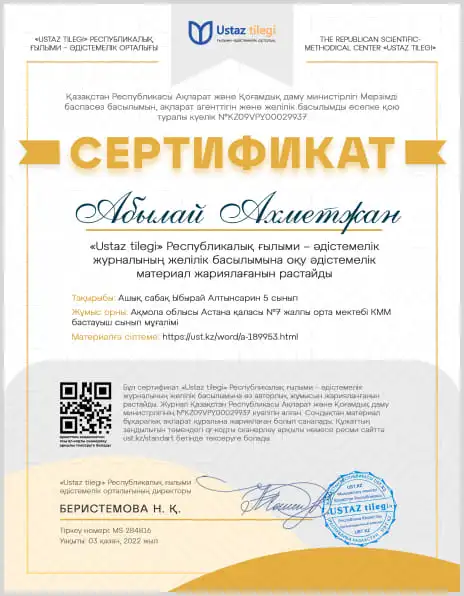
Сіз үшін 400 000 ұстаздардың еңбегі мен тәжірибесін біріктіріп, ең үлкен материалдар базасын жасадық. Төменде пәніңізді белгілеп, керек материалды алып сабағыңызға қолдана аласыз
 Дайын ҚМЖ. Барлық пәндерден 2022-2023 оқу жылына, жаңа бұйрыққа сай жасалған
Дайын ҚМЖ. Барлық пәндерден 2022-2023 оқу жылына, жаңа бұйрыққа сай жасалған



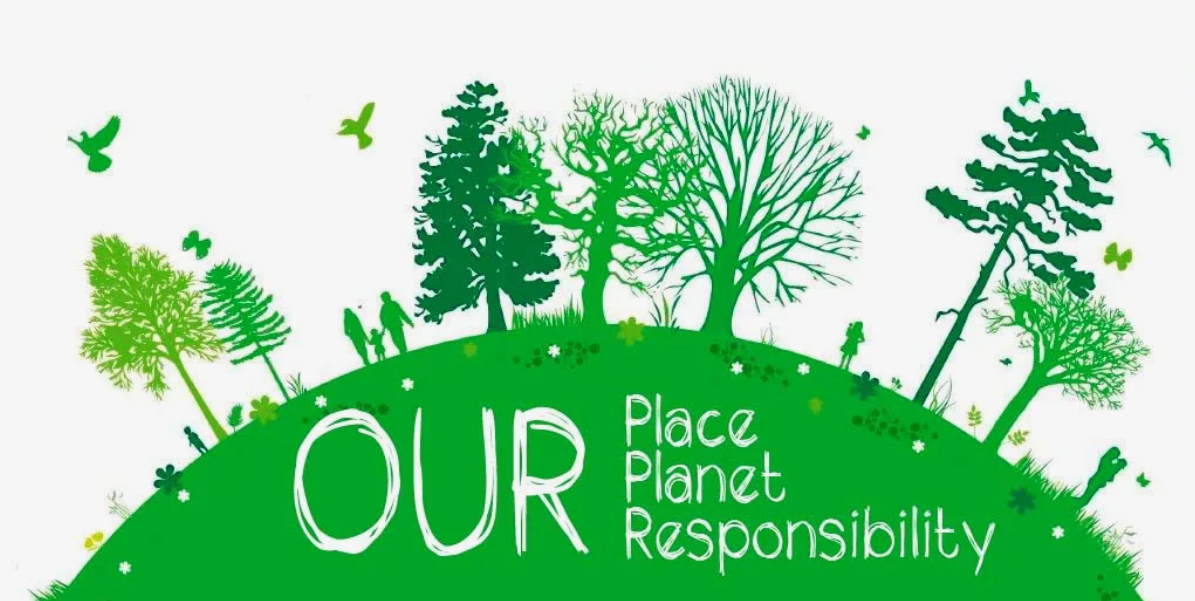


 uccess
uccess